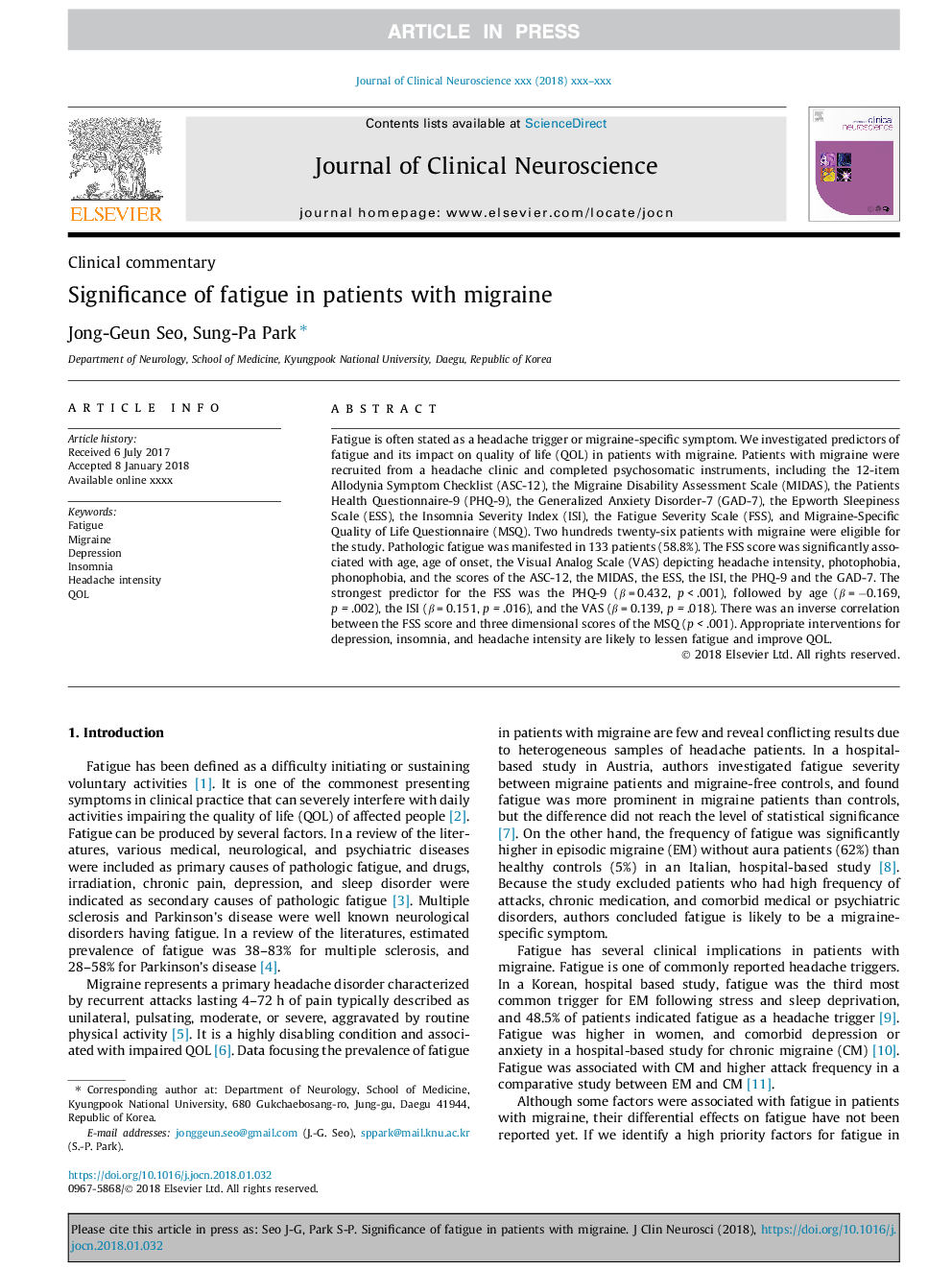| Article ID | Journal | Published Year | Pages | File Type |
|---|---|---|---|---|
| 8685153 | Journal of Clinical Neuroscience | 2018 | 5 Pages |
Abstract
Fatigue is often stated as a headache trigger or migraine-specific symptom. We investigated predictors of fatigue and its impact on quality of life (QOL) in patients with migraine. Patients with migraine were recruited from a headache clinic and completed psychosomatic instruments, including the 12-item Allodynia Symptom Checklist (ASC-12), the Migraine Disability Assessment Scale (MIDAS), the Patients Health Questionnaire-9 (PHQ-9), the Generalized Anxiety Disorder-7 (GAD-7), the Epworth Sleepiness Scale (ESS), the Insomnia Severity Index (ISI), the Fatigue Severity Scale (FSS), and Migraine-Specific Quality of Life Questionnaire (MSQ). Two hundreds twenty-six patients with migraine were eligible for the study. Pathologic fatigue was manifested in 133â¯patients (58.8%). The FSS score was significantly associated with age, age of onset, the Visual Analog Scale (VAS) depicting headache intensity, photophobia, phonophobia, and the scores of the ASC-12, the MIDAS, the ESS, the ISI, the PHQ-9 and the GAD-7. The strongest predictor for the FSS was the PHQ-9 (βâ¯=â¯0.432, pâ¯<â¯.001), followed by age (βâ¯=â¯â0.169, p =â¯.002), the ISI (βâ¯=â¯0.151, p =â¯.016), and the VAS (βâ¯=â¯0.139, p =â¯.018). There was an inverse correlation between the FSS score and three dimensional scores of the MSQ (p <â¯.001). Appropriate interventions for depression, insomnia, and headache intensity are likely to lessen fatigue and improve QOL.
Keywords
Related Topics
Life Sciences
Neuroscience
Neurology
Authors
Jong-Geun Seo, Sung-Pa Park,
